The House of Soviets is a huge brutalist building in the middle of Kaliningrad. There is no other construction in the city as large as this one, so it can be seen everywhere, which is a stain in the cityscape for many Russians.
Mainly because this is a failed architectural project that lies abandoned in the heart of Kaliningrad. But some people complain about the weird look of it, and some even mention that it looks too much like a buried robot since its appearance resembles the head of a buried giant robot.
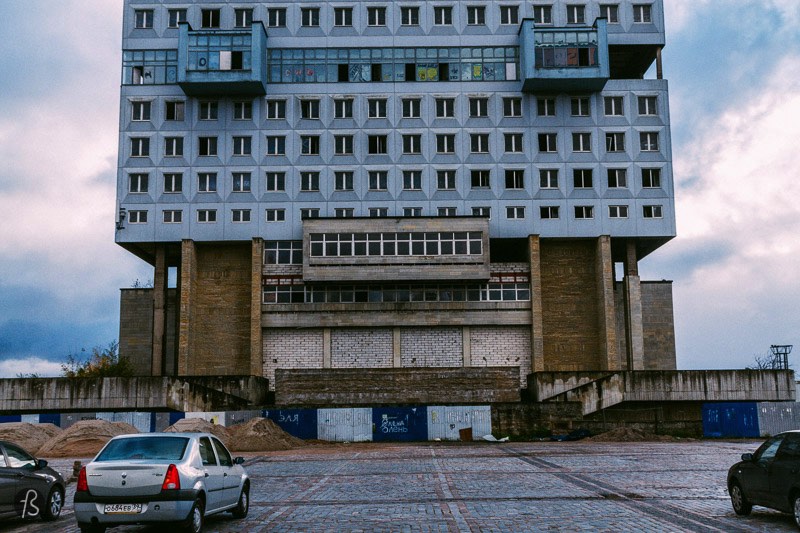
I was in Kaliningrad in the last days of October 2017, and the House of Soviets caught my attention when I arrived in the city. The building can be found in the middle of the central square of Kaliningrad, close to where the Königsberg Castle used to be but not quite there.
The House of Soviets was built over the castle’s moat; you can clearly see this in the following picture. There, you can look at the ruins of the castle and the abandoned building in the back.
But if the House of Soviets is an abandoned building that stains the reputation of Kaliningrad due to its ugliness, why the city doesn’t tear it down? This is a complicated question, and the answer is even more complex.
To try to answer it, I will have to explain a little bit of the history behind this brutalist building.
The History of this Brutalist Building in Kaliningrad
Before it was Kaliningrad, the city was called Königsberg, the most significant German town west of Berlin. During the Second World War, Königsberg was the first vital German city that the Soviet Army took. During the battle, the Königsberg Castle was severely damaged, and when the town came under the control of the Soviet Union, the local authorities decided to demolish the castle.
They argued that they shouldn’t preserve the castle because it was a symbol of fascism in the city. They didn’t care about the Königsberger Schloss’s rich history: it started being built in 1257 by Teutonic Knights and was one of the landmarks of East Prussia.
After the end of the Second World War, while in control of the USSR, the castle was blown up, demolished, and cleared away. Around 1964, two architectural competitions for the area’s redevelopment happened. They included design studios and architecture offices from Russia, Lithuania, Latvia, and Estonia.
The winning design was from Kyiv-born architect Yulian L. Shvartsbreim. He was a well-respected citizen and architect in the Soviet Union.
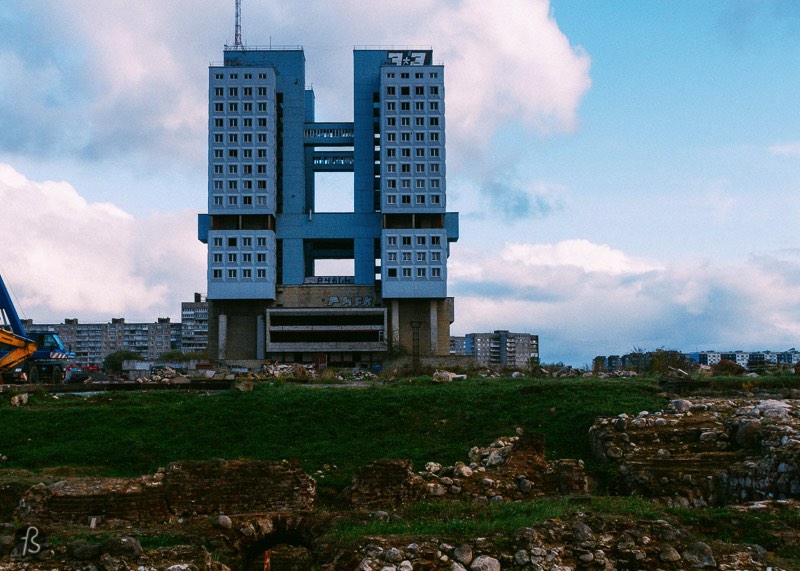


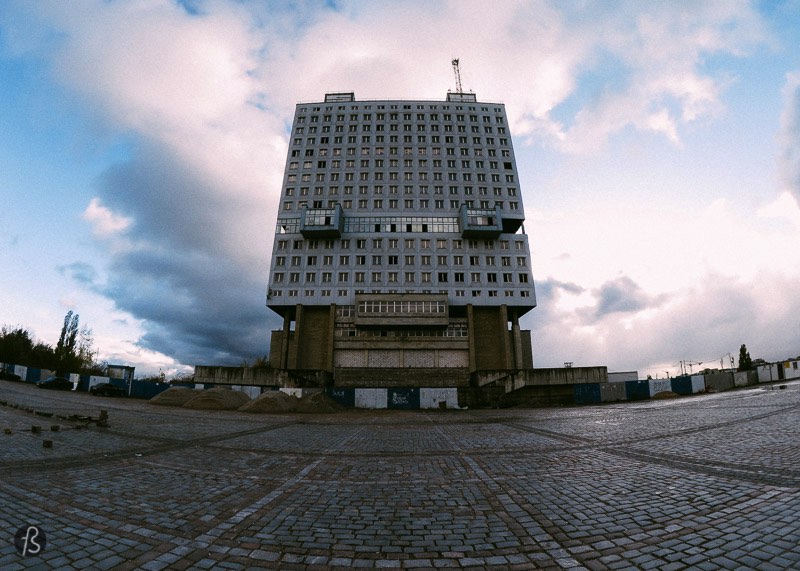
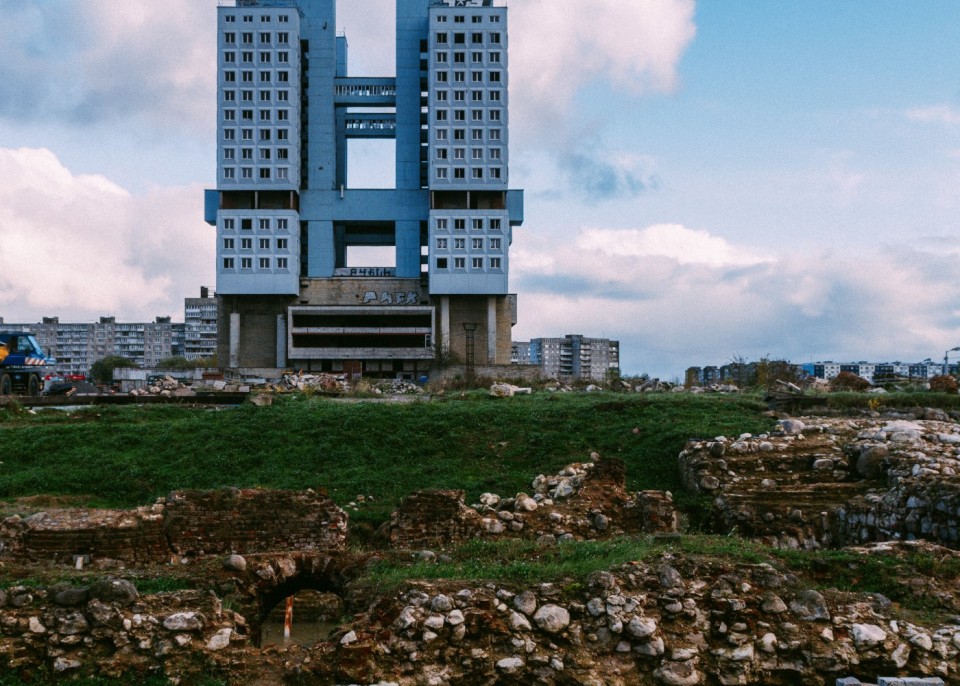
This project was heavily influenced by the works of Oscar Niemeyer and Lúcio Costa, who developed Brasília, Brazil’s Capital, a few years ago. Construction of the House of Soviets began in 1970, and the building was intended to be used as the central administration office in the entire Kaliningrad Oblast. But things didn’t go very well during construction.
The massive concrete that was being poured on top of the Königsberger Schloss ruins resulted in a lot of structural problems. The soil of the area didn’t help much, being marshy. They had to fix and adapt the project to the new conditions, so only 21 of the planned 28 floors were completed.
Construction of the House of Soviets stopped in 1985 when the regional Communist Party Committee lost interest in the project and ran out of money. After that, the Berlin Wall fell, and the Soviet Union ended, and the building was still there, incomplete, in the middle of Kaliningrad.
For 20 years, the House of Soviets stood abandoned and unfinished in the heart of Kaliningrad until 2005, when Russian President Vladimir Putin visited the city to celebrate Kaliningrad’s 60 birthday and the 750th year of Königsberg.
Because of Putin’s visit, the House of Soviets received some light blue paint and windows. Some people believe that it made the building a little less ugly. But it still stood as a problem for the city since nothing was done to its interior, and it remained unfinished and unusable.
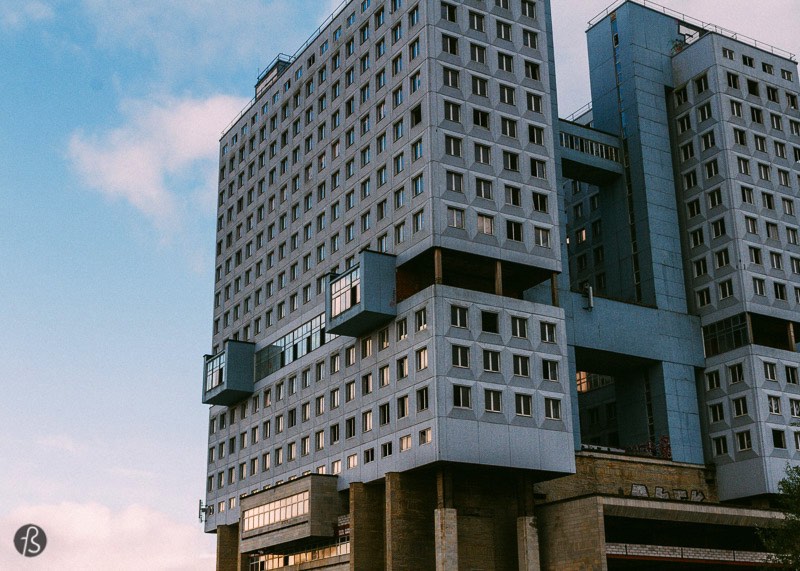
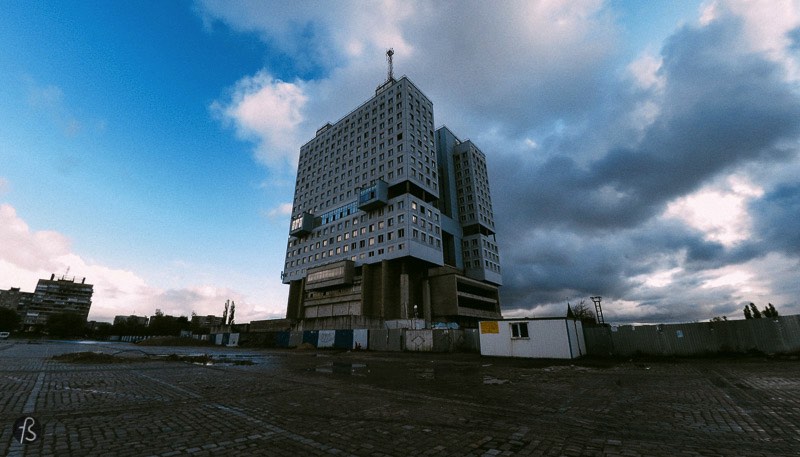

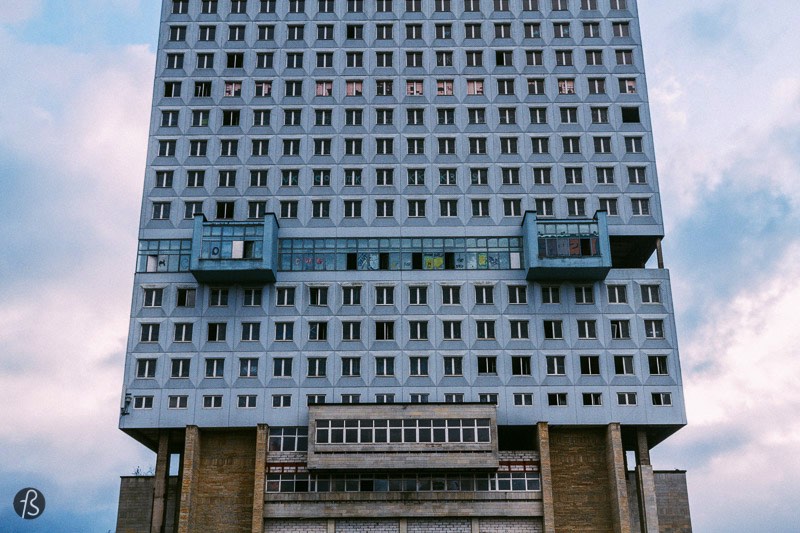

At the Hostel Suffix, where I stayed, I asked around about the House of Soviets, and most people just said that they hoped the building was done and being used. The fact that it is abandoned is a sign of past failures, and Kaliningrad needs to fix it.
Some people told me that it would be better for it to be demolished and for the area to become a new museum of the city’s vibrant Prussian history and heritage. But nobody knows for sure what will happen with the House of Soviets. Much construction work is happening in Kaliningrad for the 2018 World Cup, but I didn’t see anything being done to the building. Nothing.
It’s too bad I couldn’t get inside the House of Soviets due to some problems with the security people who walked around the building. While walking around the area, I saw some kids jumping a fence and walking around the ruins of the Königsberg Castle. I followed them and quickly found a security guy who couldn’t understand what I tried to say in English and couldn’t argue with him in Russian. So, I just walked away and took more pictures outside of it.
I find the House of Soviets a beautiful example of Brutalist Architecture and an excellent exemplar of Soviet Architecture. I hope something good happens to the building that seemed to follow me everywhere I went in the city center of Kaliningrad.
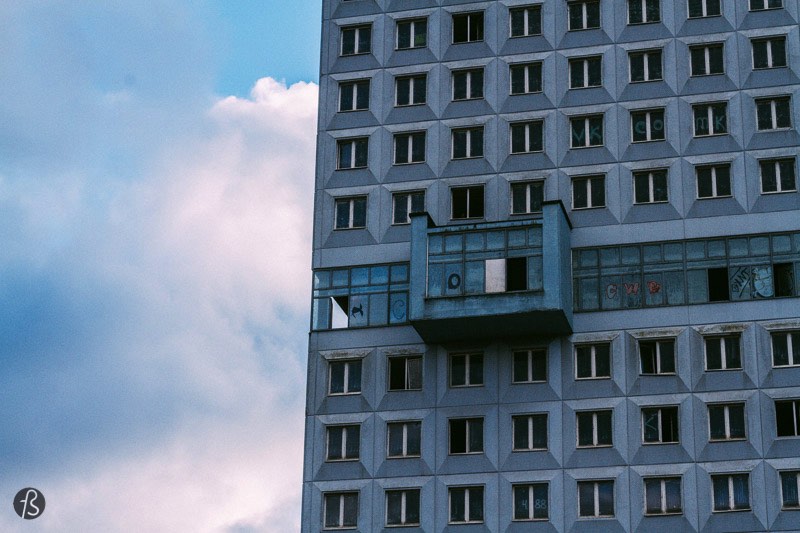
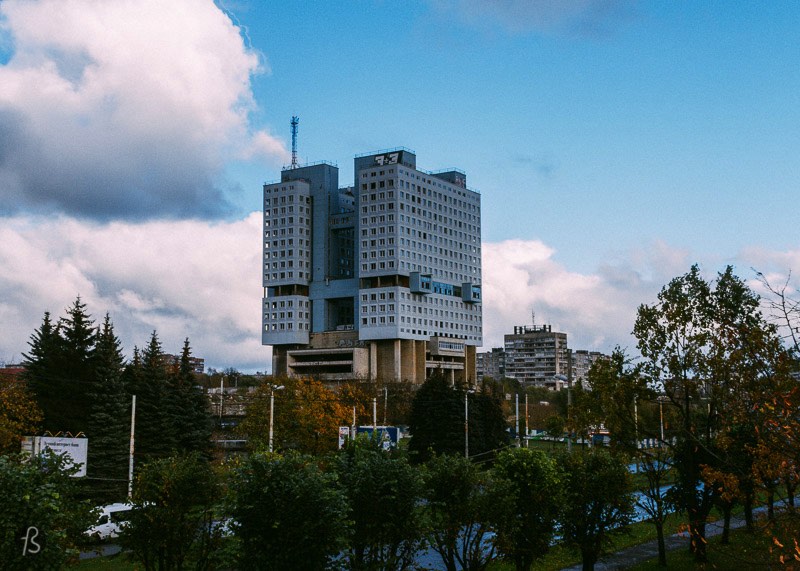

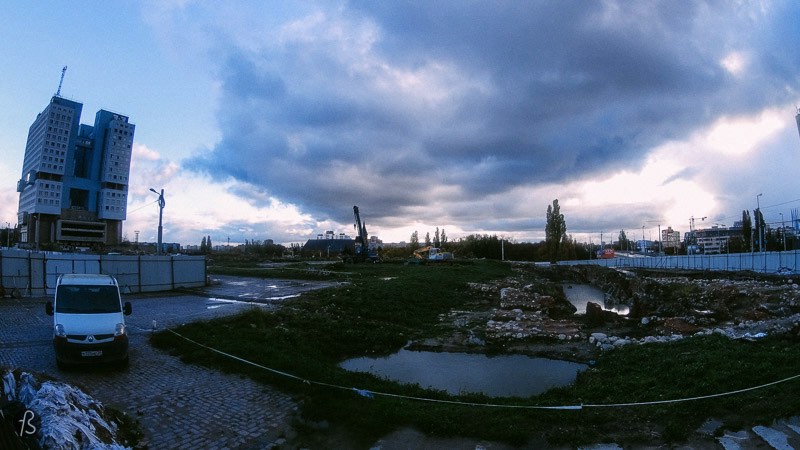
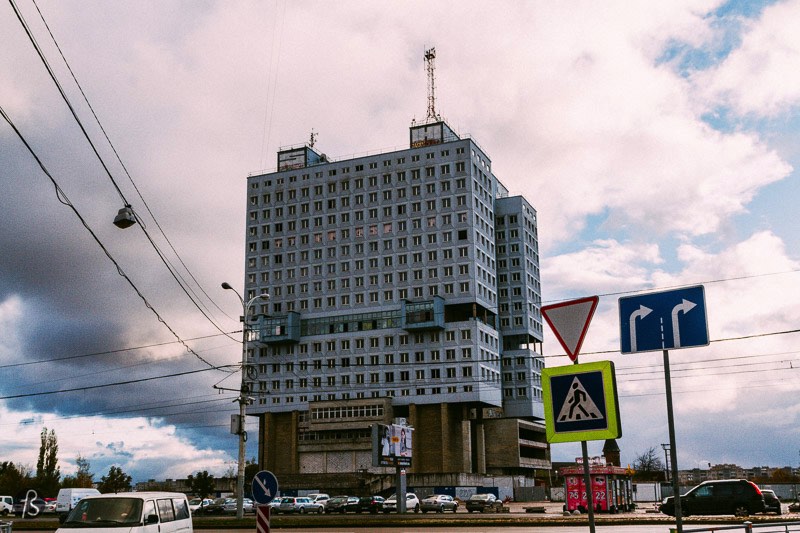
If you happen to visit Kaliningrad and want to find the House of the Soviets, you need to find your way into Shevchenko and Lenin Avenue. You will know you’re in the right place when you see a large square with something that looks like a buried robot’s head in the middle.
If you speak Russian or have somebody to help you, try bribing the security guard there and get inside the building. I would love to see your pictures from the inside.
The House of the Soviets in Kaliningrad
2 к, Ulitsa Shevchenko, 5, 236006
Kaliningradskaya Oblast, Russia